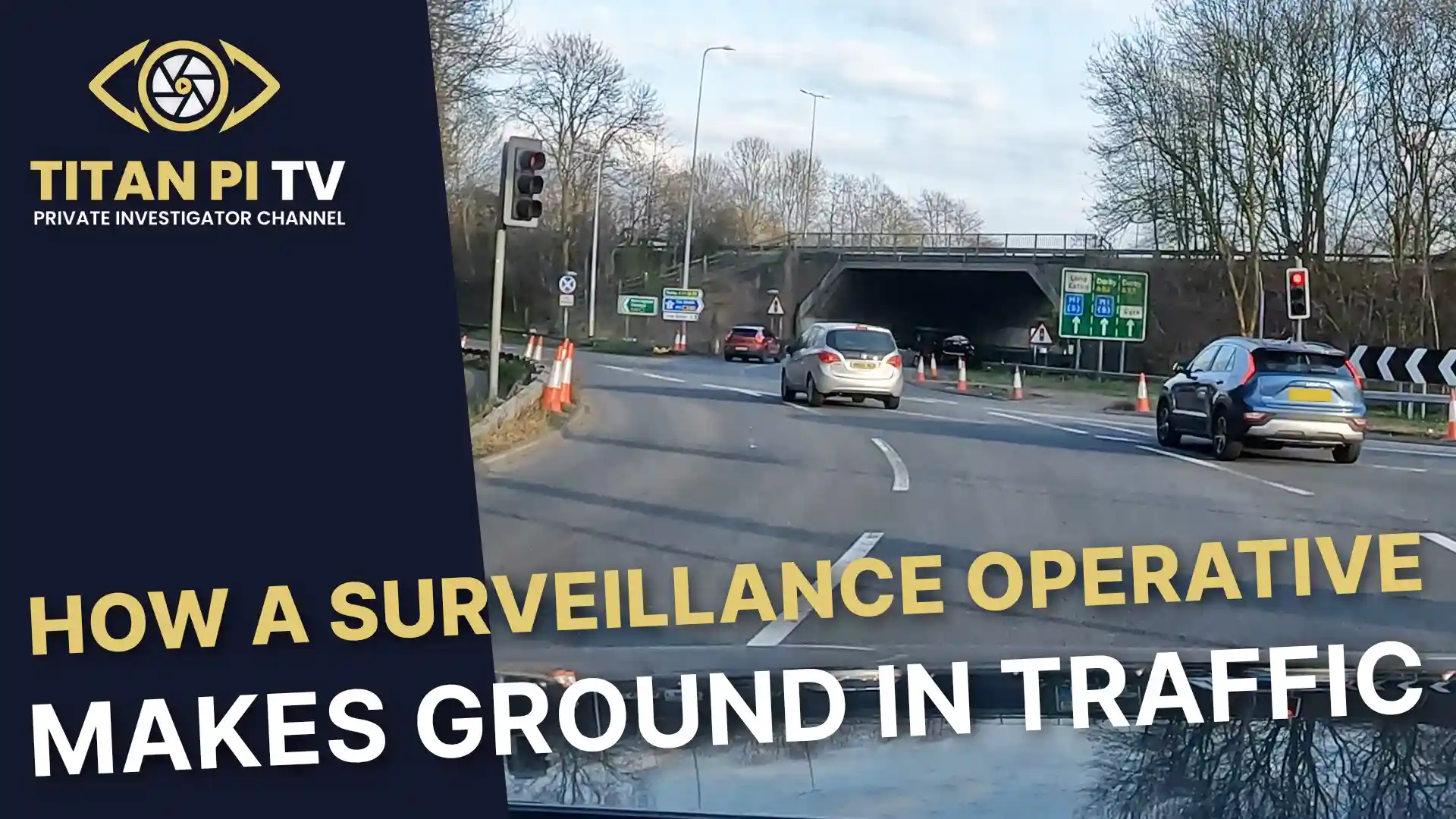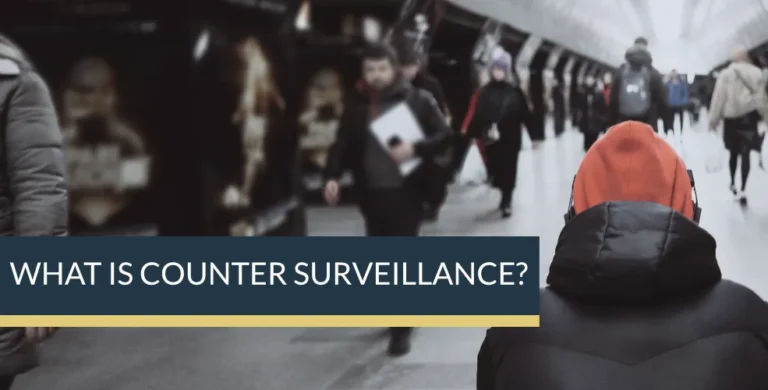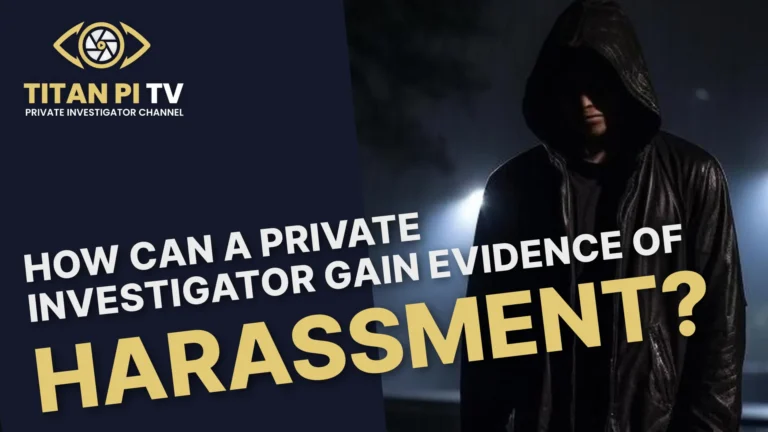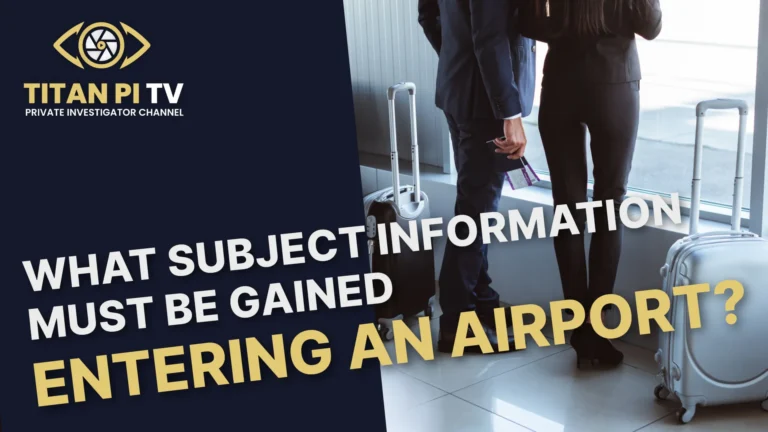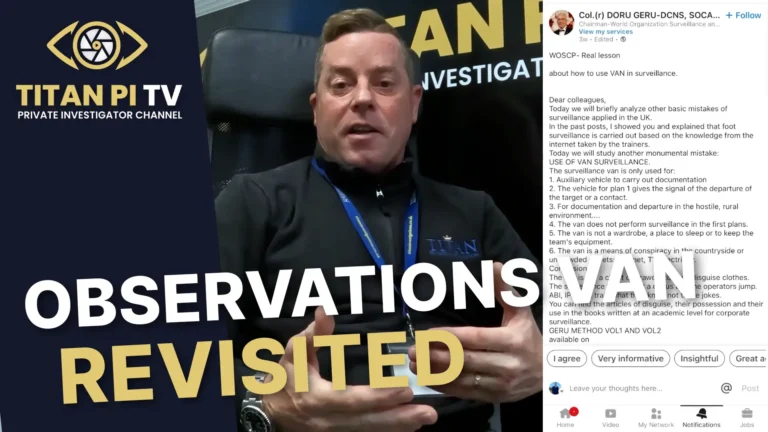How a Surveillance Operative Makes Ground in Traffic
In the latest episode of Titan PI TV, Simon Henson, Managing Director of Titan Private Investigation Limited, delves into the fascinating and often misunderstood world of surveillance operatives. Titled “How a Surveillance Operative Makes Ground in Traffic”, the episode offers a behind-the-scenes look at the tactics and decision-making processes that private investigators employ when navigating the challenges of live surveillance. With Titan’s national coverage spanning from Truro in the southwest to Manchester in the northwest, the agency’s expertise is well-established, and this episode provides a rare glimpse into their operational strategies.
Simon Henson, who also hosts the show, begins by addressing a common question posed during Titan’s surveillance training courses: “Are surveillance operatives expected to jump red lights?” The answer, as Simon emphatically states, is a categorical no. However, the discussion doesn’t end there. Instead, Simon explores the nuanced decision-making process that surveillance operatives must undertake, weighing the risks against the potential gains in high-pressure situations.
The Risk vs Gain Equation: A Crucial Consideration
At the heart of the episode is the concept of the “risk versus gain” equation, a principle that guides every decision a surveillance operative makes. Simon explains that while jumping a red light might seem like a quick solution to keep up with a subject, the risks far outweigh the potential benefits. These risks include:
- Visibility to the Subject: If the subject sees the operative running a red light, it could compromise the entire operation.
- Legal Consequences: A marked or unmarked police car, or even a red-light camera, could result in prosecution, effectively removing the operative from the investigation.
- Public Safety: Jumping a red light could lead to accidents, either involving the operative or other road users, which would not only jeopardise the operation but also have serious legal and ethical implications.
- Third-Party Compromise: Other drivers in traffic who know the subject might notice the operative’s actions, increasing the risk of exposure.
Simon stresses that in most cases, the risks simply aren’t worth it. He advises operatives to adhere to the Highway Code and rely on alternative methods, such as vehicle trackers, to maintain surveillance without compromising safety or legality.
Making Ground in Traffic: The Art of Tactical Driving
The episode then shifts focus to the practical challenges of making ground in traffic, a scenario every surveillance operative encounters. Simon paints a vivid picture of the frustrations of being stuck behind slow-moving vehicles, such as lorries on a dual carriageway, and outlines the tactics operatives can use to navigate these situations effectively.
Tailgating: A Risky Move
One option is to close the gap and tailgate the vehicle ahead. However, Simon advises against this approach, as it reduces the operative’s visibility of the road ahead and increases the likelihood of an accident. In the event of sudden braking by the vehicle in front, the operative could find themselves involved in a collision, rendering them useless to the operation and potentially facing prosecution.
Flashing Headlights: A Double-Edged Sword
Another tactic is to flash the vehicle’s headlights to signal the driver ahead. While this can be effective, Simon cautions that it could draw unwanted attention from the subject if they are within view of the operative’s vehicle. Discretion is paramount in surveillance, and any action that risks exposing the operative should be avoided.
The Subtle Approach: Using Indicators
A less aggressive and more covert method is to use the offside indicator to signal the intention to overtake. This approach is less likely to alarm the driver ahead or attract attention from the subject, making it a preferred option in many cases.
The Quartering Manoeuvre: A Tactical Masterclass
The highlight of the episode is Simon’s detailed explanation of the “quartering” manoeuvre, a highly effective but aggressive tactic used to encourage vehicles in the offside lane to move over. Simon sets the scene: a dual carriageway with vehicles in both lanes travelling at similar speeds, creating a bottleneck. The operative needs to make ground but is blocked by a vehicle in the offside lane.
To execute the quartering manoeuvre, the operative:
- Creates a Gap: Leaves a significant distance between their vehicle and the one ahead.
- Accelerates Aggressively: Closes the gap quickly, moving towards the centre line of the offside lane.
- Brakes and Shifts Position: Just before reaching the vehicle ahead, the operative brakes hard and moves to the far right of their lane, creating a flickering effect in the rear-view mirror of the vehicle ahead.
This sudden and deliberate movement often causes the driver ahead to panic or become disoriented, prompting them to move over and allow the operative to pass. Simon acknowledges that this tactic is not without risks, as it could potentially cause accidents if not executed correctly. However, when done properly, it is an invaluable tool for making ground in traffic, with a high success rate.
Real-World Application: A Case Study
To illustrate the principles discussed, Simon shares a real-world example involving a subject vehicle—a silver Vauxhall Meriva—approaching a set of traffic lights. The operative must decide whether to run a red light to maintain visual contact or adhere to the Highway Code and risk losing the subject. Simon opts for the latter, emphasising the importance of risk assessment and adherence to legal and ethical standards.
Later in the episode, Simon demonstrates the quartering manoeuvre in action. With the subject vehicle temporarily out of view, the operative encounters a slower vehicle in the offside lane. Using the quartering technique, Simon successfully encourages the vehicle to move over, allowing him to regain visual contact with the subject. The manoeuvre is executed with precision, showcasing the skill and split-second decision-making required in surveillance operations.
Balancing Aggression and Covert Tactics
Simon concludes the episode by reflecting on the balance between aggression and discretion in surveillance driving. While tactics like quartering can be highly effective, they must be used judiciously and with a clear understanding of the risks involved. The ultimate goal is to maintain visual contact with the subject without compromising the operation or endangering public safety.
He also invites viewers to share their thoughts on the red-light dilemma, encouraging engagement and discussion within the Titan PI TV community. This interactive element adds a personal touch to the episode, fostering a sense of connection between the audience and the Titan team.
Episode Final Thoughts
The latest episode of Titan PI TV offers a compelling and informative look at the challenges faced by surveillance operatives on the road. Simon Henson’s expertise and engaging presentation style make complex concepts accessible to viewers, whether they are aspiring private investigators or simply curious about the world of surveillance.
By emphasising the importance of risk assessment, adherence to legal standards, and the careful application of tactical driving techniques, Simon provides valuable insights into the art and science of surveillance. The episode serves as a reminder that success in this field requires not only skill and experience but also a commitment to professionalism and ethical conduct.
For those interested in learning more about the inner workings of private investigation, Titan PI TV continues to be an invaluable resource. With its blend of practical advice, real-world examples, and engaging storytelling, the show offers a unique window into a fascinating and often misunderstood profession.
If you missed this episode, be sure to catch it on the Titan PI TV YouTube channel, and don’t forget to subscribe for more insights and updates from the world of private investigation.
What’s Next on Titan PI TV?
Thank you for reading, watching or listening to this week’s blog post on Titan PI TV. If you found this information helpful, please give us a thumbs up and subscribe to our channel. We’re aiming to reach 2,000 subscribers by mid-April, marking our two-year anniversary. Stay safe, and we’ll see you in the next episode!
Stay tuned for more insights into the world of private investigations. Until next time, stay safe and keep learning!
Titan PI TV: Uncovering the Truth, One Investigation at a Time.

